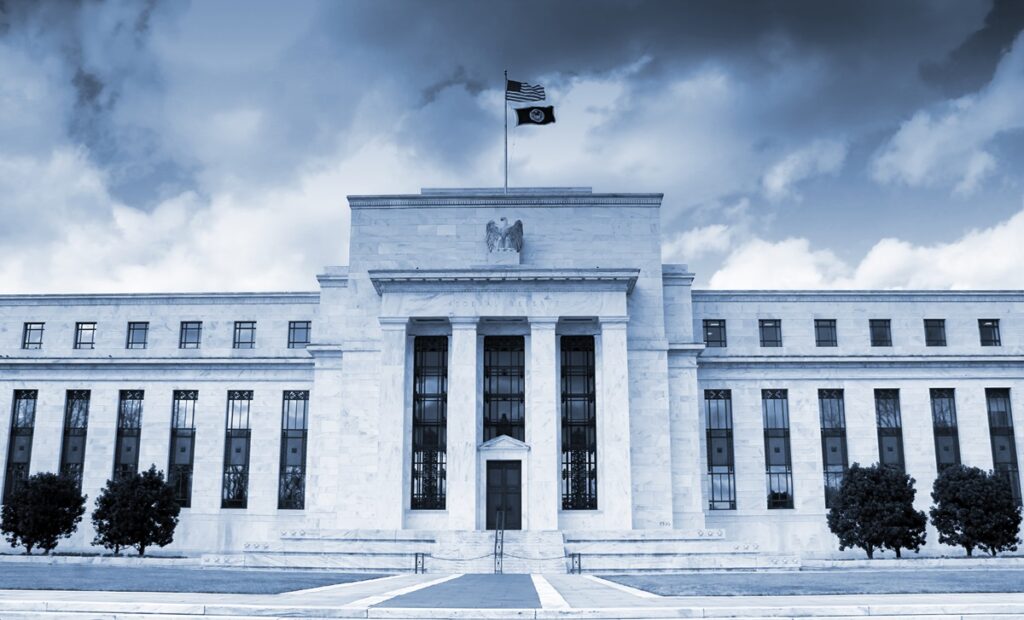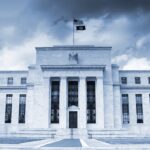The Federal Open Market Committee on Wednesday afternoon concluded its bi-monthly meeting and announced it was holding the federal funds rate at 4.25%-4.50%.
“Although swings in net exports have affected the data, recent indicators suggest that economic activity has continued to expand at a solid pace,” said the FOMC in a statement. “The unemployment rate has stabilized at a low level in recent months, and labor market conditions remain solid. Inflation remains somewhat elevated.”
Voting for the monetary policy action were Jerome H. Powell, Chair of the Federal Reserve Board; John C. Williams, Vice Chair; Michael S. Barr; Michelle W. Bowman; Susan M. Collins; Lisa D. Cook; Austan D. Goolsbee; Philip N. Jefferson; Neel Kashkari; Adriana D. Kugler; Alberto G. Musalem; and Christopher J. Waller. Neel Kashkari voted as an alternate member at this meeting.
“Due to inflation still running higher than expected, mortgage rates are likely to remain flat through the summer housing market,” noted Voxtur CEO Ryan Marshall of the Fed’s announcement. “Furthermore, with continued uncertainty surrounding tariffs and their impact on the global economy, the bond market is facing increased volatility, which is having a destabilizing effect on mortgage investments in the secondary market. Heading into the fall, if inflation cools as expected, mortgage rates will begin to dip slowly and steadily, finishing out 2025 around 6%.”
The goal of the FOMC is to achieve maximum employment and inflation at the rate of 2% over the longer run, according to their post-meeting statement.
“Uncertainty about the economic outlook has increased further,” said a statement from the FOMC. “The Committee is attentive to the risks to both sides of its dual mandate and judges that the risks of higher unemployment and higher inflation have risen.”
Mortgage Bankers Association (MBA) SVP and Chief Economist Mike Fratantoni said, “MBA forecasts that the risks to growth and the job market will wind up being the bigger concern this year, which will lead the Fed to resume cutting short-term rates in the second half of the year. Until then, the hard data on inflation and unemployment will continue to drive interest rates, including mortgage rates, from one end of a trading range to the other, with only a slight downward trend in mortgage rates over the remainder of 2025.”
The FOMC announced it will take the following actions in considering its next movement of the federal funds rate:
- Carefully assess incoming data, the evolving outlook, and the balance of risks
- Continue reducing its holdings of Treasury securities and agency debt and agency mortgage‑backed securities.
- Continue its commitment to supporting maximum employment and returning inflation to its 2% objective.
“The March Fed meeting was just seven weeks ago, yet since then, we’ve had a major tariff announcement and rising economic uncertainty as consumers report concern about their personal financial situation, the likelihood of losing a job, and the general business outlook, with the expectations component of consumer confidence falling to its lowest since October 2011 in the April preliminary data,” added Danielle Hale, Chief Economist at Realtor.com. “Nevertheless, both March and April jobs reports showed a still healthy labor market, with unemployment at 4.2%.”
In April Federal Reserve Chair Powell noted in a speech at the Economic Club of Chicago that President Trump’s tariffs would likely lead to a faster rise in prices and weigh on future economic growth.
“The level of the tariff increases announced so far is significantly larger than anticipated,” Powell said last month. “The same is likely to be true of the economic effects, which will include higher inflation and slower growth.”
A Greater Housing Impact
While factors such as layoffs and employment may impact the nation’s housing market, the Trump administration continues its downsizing of the federal workforce.
In a ripple effect, the D.C. metro housing market alone has felt the reverberations of federal layoffs, as Redfin has reported active listings of homes for sale in Washington, D.C. area jumping 25.1% year-over-year to the highest levels since 2022 during the four weeks ending April 27—the largest gain on record. Redfin also found that new listings in D.C. rose 11.4% year-over-year to the highest level since 2022—nearly double the national gain of 5.8%.
“Purchase mortgage application volume continues to run ahead of last year’s pace, and MBA forecasts that will be true for the year as a whole, even with the rate volatility we have experienced,” added Fratantoni.
Dr. Selma Hepp, Cotality’s Chief Economist, said, “Fed officials are signaling a wait-and-see approach to the impact global trade uncertainties will have on the US economy. The Fed is trying to straddle keeping inflation moving towards the target and ensuring employment doesn’t cool considerably more – not an easy task given the current policy context. One thing is for certain, interest rates are highly unlikely to dip down to 2021 levels, when rates hovered around 3%. We foresee a 6% mortgage rate, or higher, to be the new normal for the 30-year fixed mortgage for the next two years.”
According to Freddie Mac, the 30-year fixed-rate mortgage (FRM) averaged 6.76% as of May 1, 2025, down from the previous week when it averaged 6.81%. A year ago at this time, the 30-year FRM averaged 7.22%.
“The best-case scenario for mortgage rates is to hover just above the 6% mark for the next two years,” noted Victor Kuznetsov, Co-Founder and Managing Director of Imperial Fund Asset Management. “The average American household has adopted a wait-and-see strategy regarding mortgage rates, as they also seek to reduce their monthly consumer spending, amid current economic uncertainty. The good news is that employment and home prices remain strong, so families will be in a better position to buy or refinance a home in the coming months, especially if rates dip below 6%.”
Hale added, “Still high costs stemming from high home prices and elevated mortgage rates are a particularly tough hurdle for first-time homebuyers, a factor that caused a dip in the U.S. homeownership rate in the first quarter. Those who plan to move forward in the search for a home are not only likely to have more time to make decisions in a slower-moving housing market, they are also likely to see more flexibility from sellers, which is a welcome development.”
Kiavi’s Lawlor commented on additional headwinds that may sway the housing space in the months to come.
“In the housing market, investor strategy and affordability remain top of mind. Real estate investors should prepare for a potentially uneven summer as inflation, tariffs and labor construction shortages continue to push up the cost of doing business,” said Lawlor. “We’re also watching the bond market’s reaction to global trade uncertainty closely, as this will influence long-term financing costs. Some markets, particularly in the Midwest and Northeast, are showing renewed strength, while others further South are seeing longer days on market and rising inventory levels. As always, real estate investing is about managing risk. Our best advice for investing in any market is always to do your research down to the zip code and diversify your exit strategies.”





